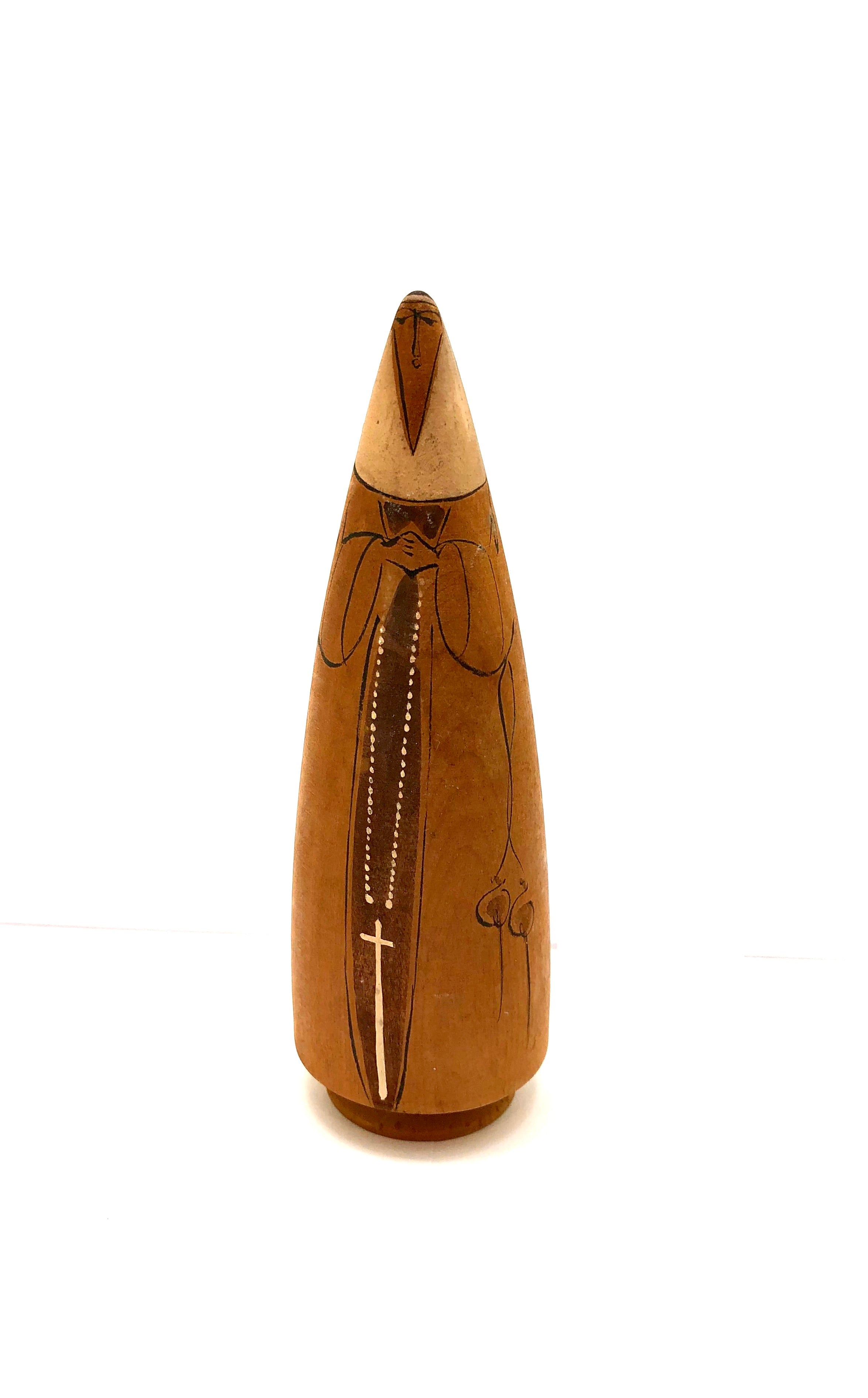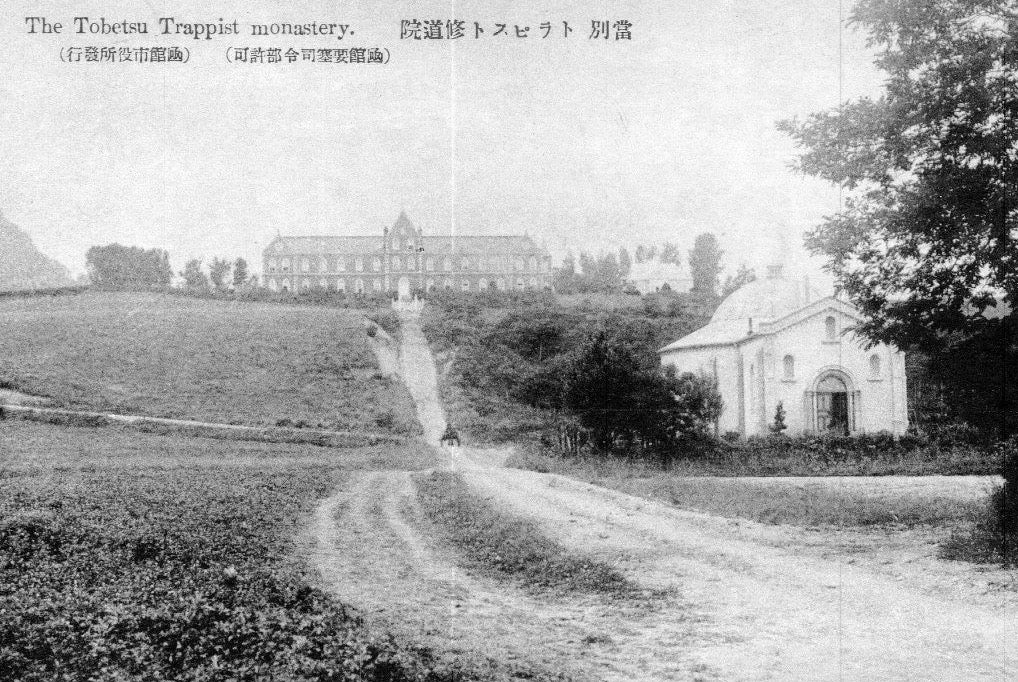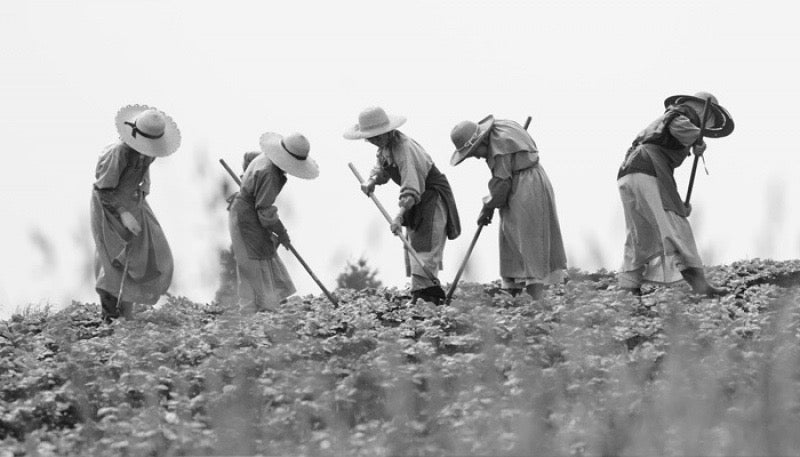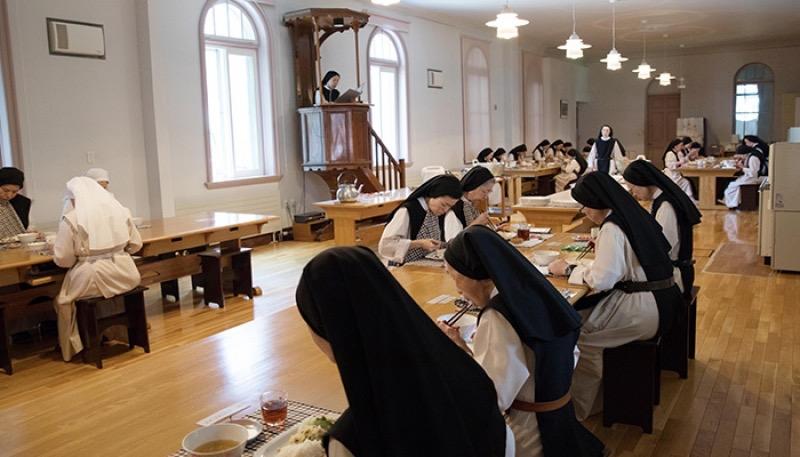



Vintage Japanese Kokeshi: Lathe-Turned Trappist Nun Figure | Monastery & Convent Hakodate | Hokkaido by Nemoto Mogura
Dimensions: 5-3/4"h
These large figure represent a Trappist nun of the Cistercian Order, of the Roman Catholic Church. The Order itself dates back several hundred years, originating in Citeaux, the Burgundy region of France at the end of the 11th/ century, (1098). There are about 70 nuns living in this facility at this time for which the facility has gone through major renovation and expansion since its inception.
This simple lathe-turned figure is hand-painted and detailed shown in full garb representing the religious habit of this order, (style, size, and color). The nun’s veil typically designates the community where they live, which here is that of the Trappist. Their habits consist of a tunic covered by a scapular and cowl, with a hood for the monk and veil for the nun. Other than knowing that the carving was done by the brothers of the monastery, no craftsperson is indicated.
Vintage Condition: Excellent, fully detailed, “as is”, and retains the original craft/workmanship. Any discoloration, chipping/cracking, surface wear, or structural damage is noted.
NOTE: With the assistance of the French abbey of Bricquebec in Normandy, a convent was founded in Kamiiso, near Hakodate, Hokkaido. A monastery followed soon after, and today, the Cistercian order has a Trappist monastery and five Trappistine convents, spreading from Hokkaido south to Okinawa.
Convent: Religious sisters/nuns live in convents, which offer more open access to the secular world. Residents typically live and pray in the convent but work outside in schools, hospitals, and act as administrators and oversee the everyday duties of the household including growing food, preparation, and serving their sisters in residence.
Monastery: A monastery is the male version of a convent. It’s a place where monks and brothers reside and complement the vocation of the religious sisters/nuns. The male population, work, and pray together, working inside and outside their respective communities and also oversee the everyday duties of the community including food growing, preparation and service.
